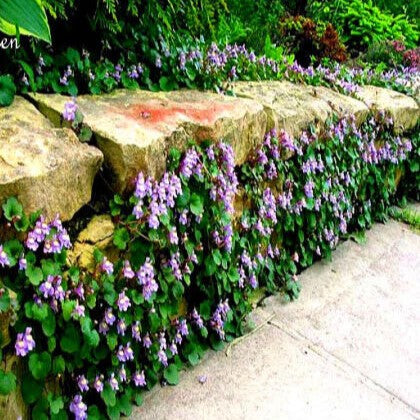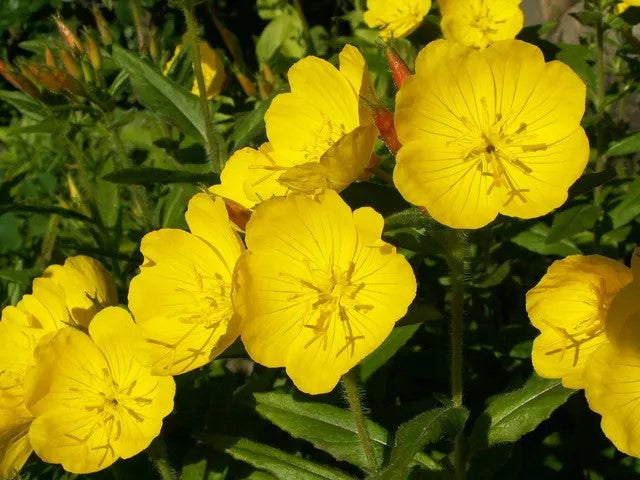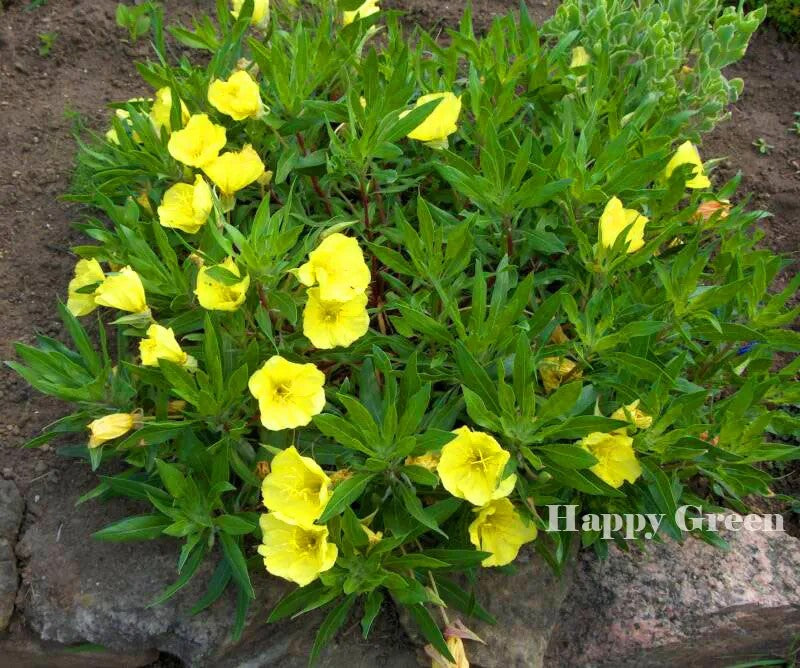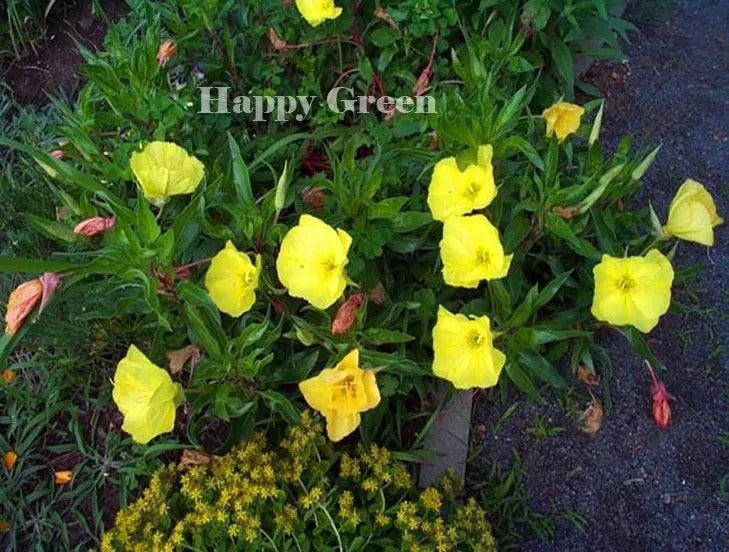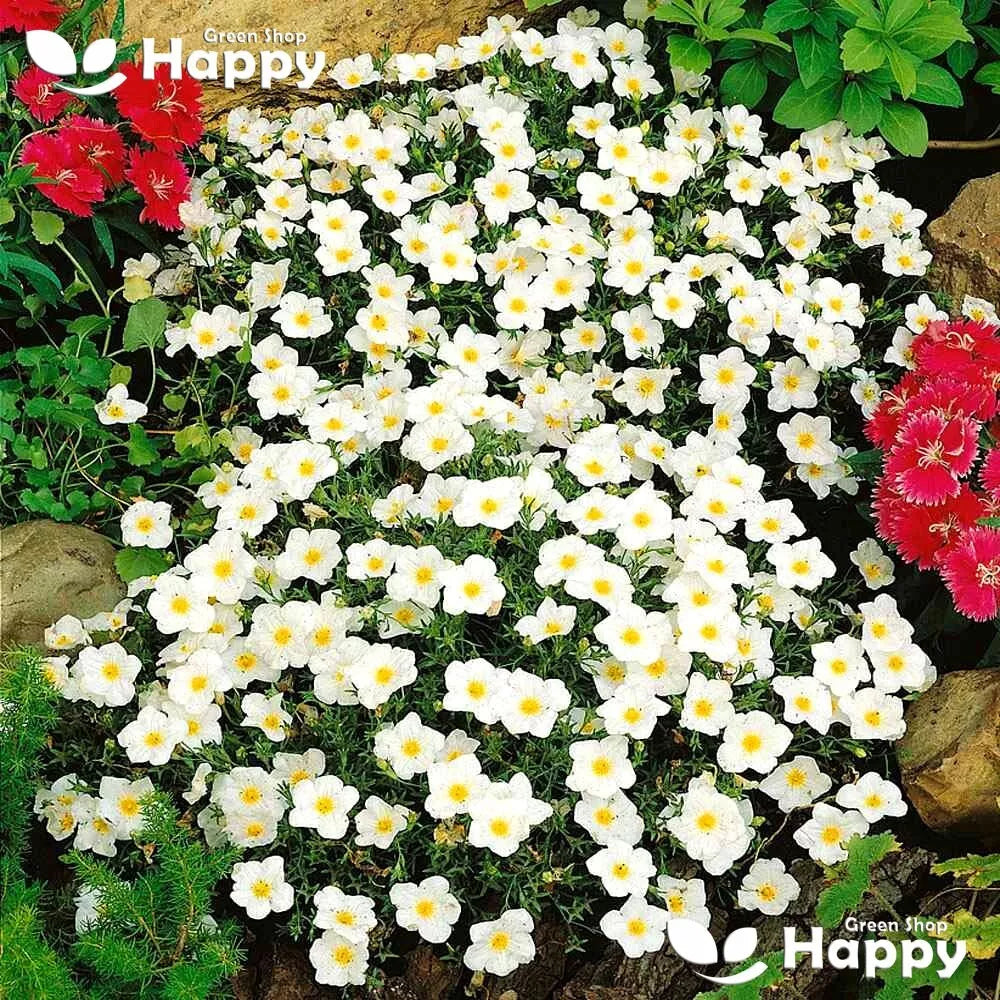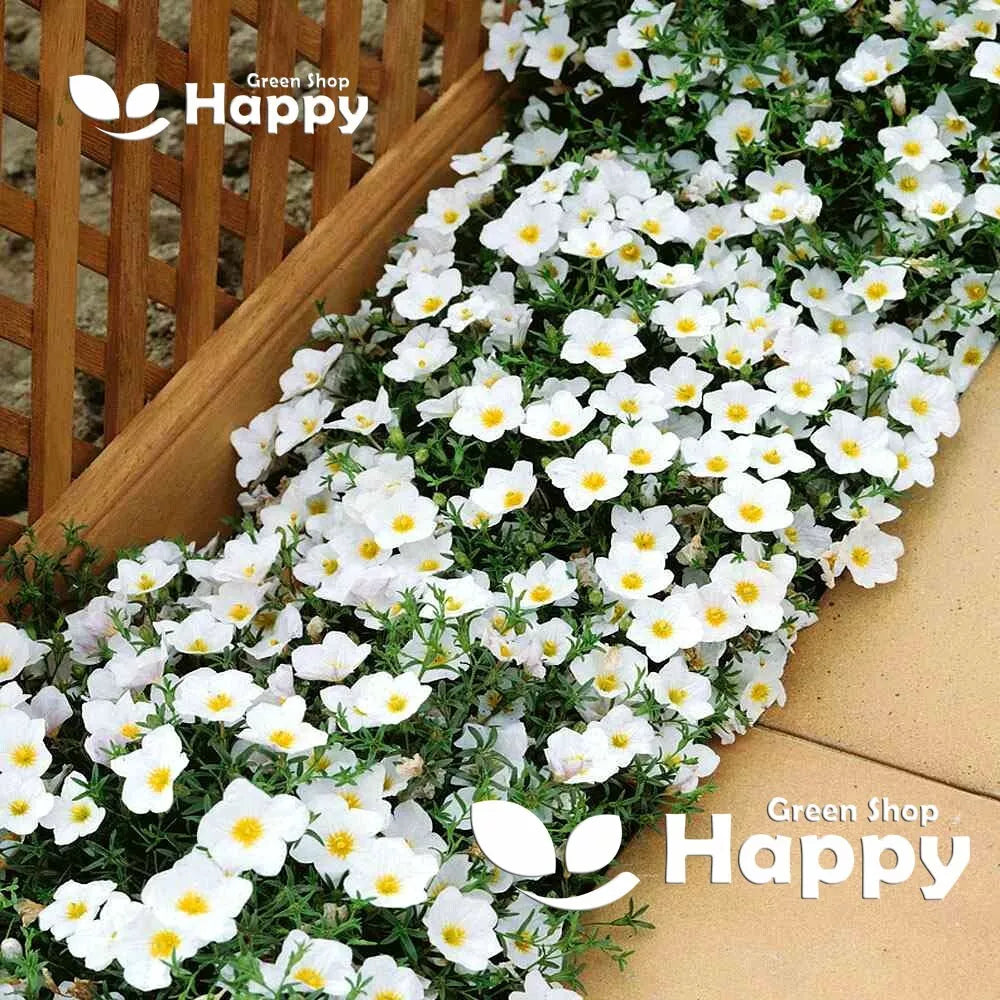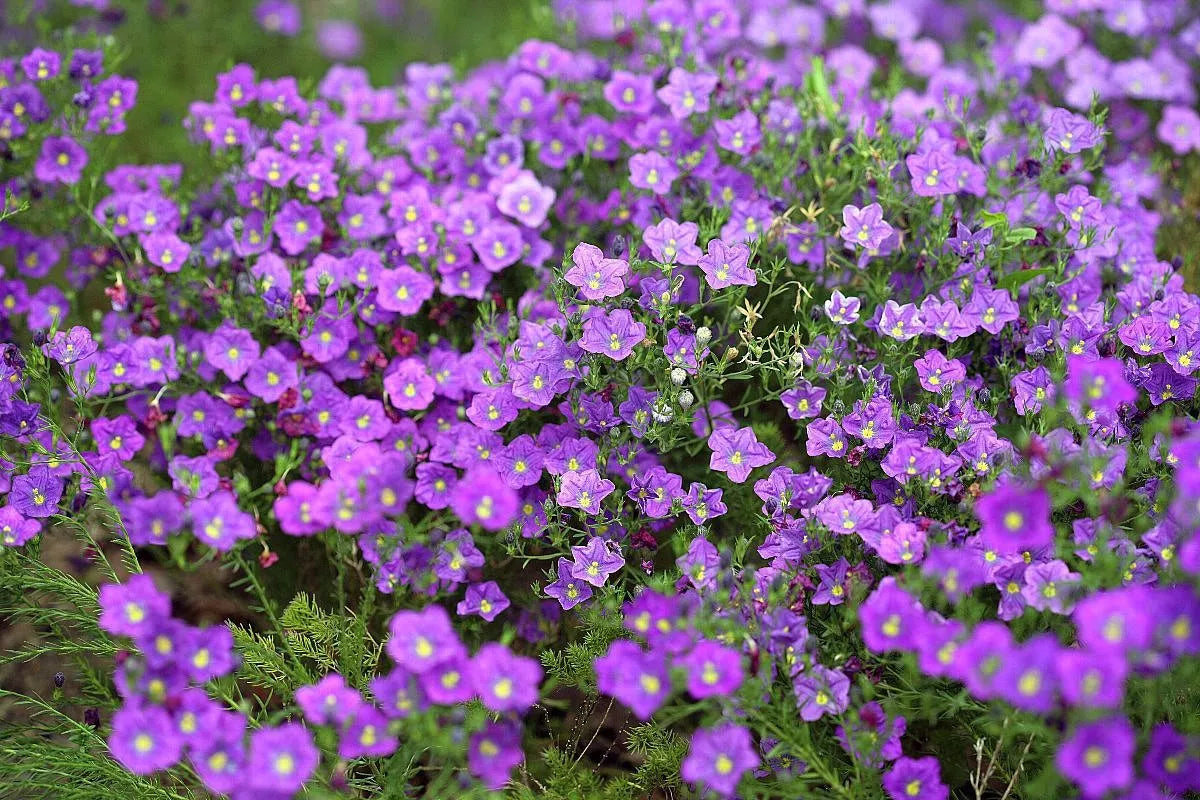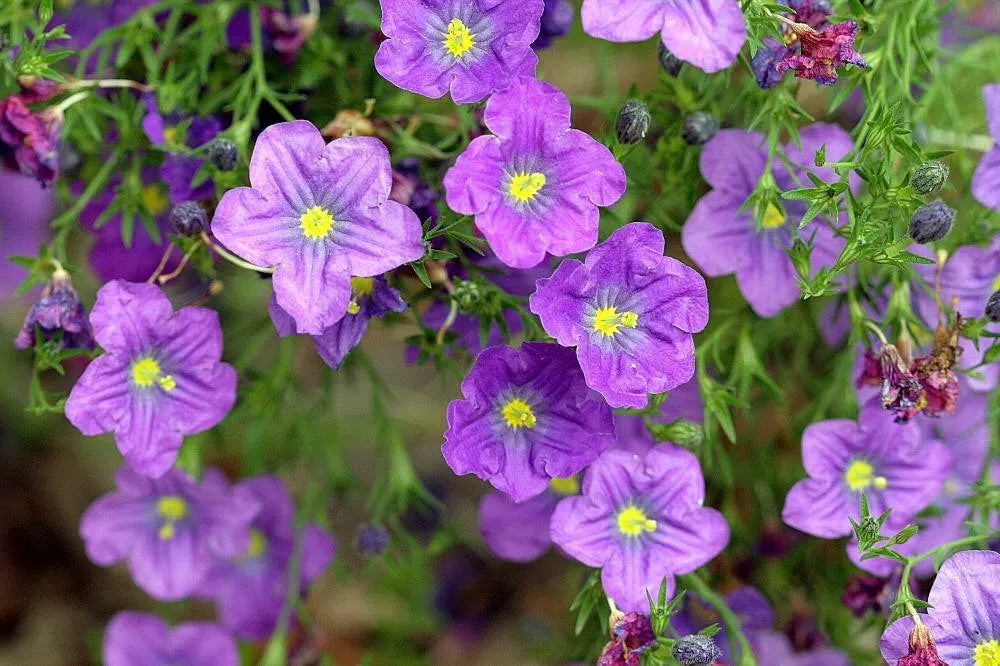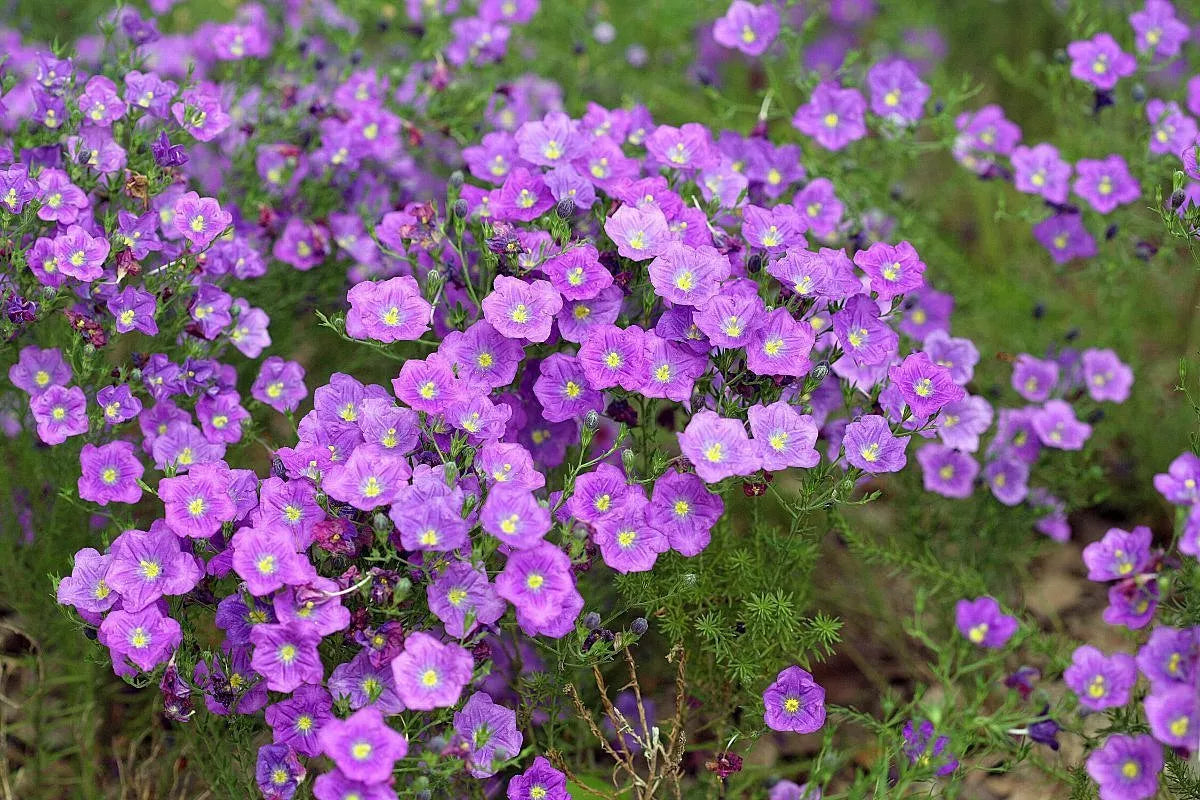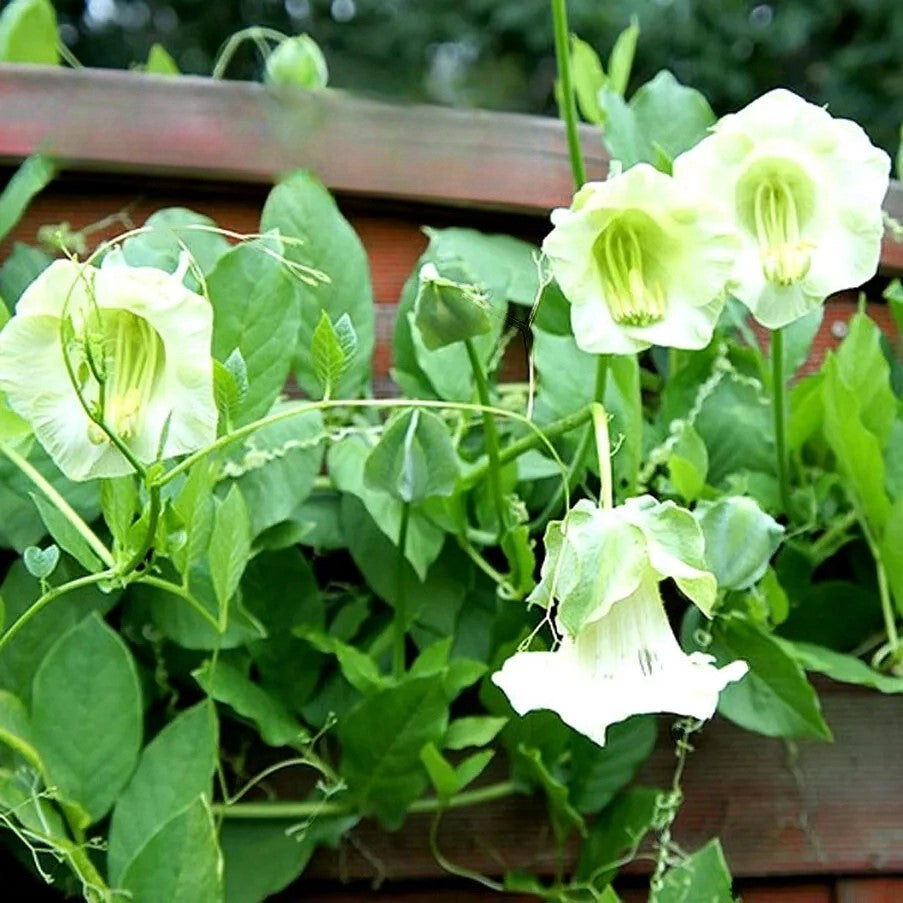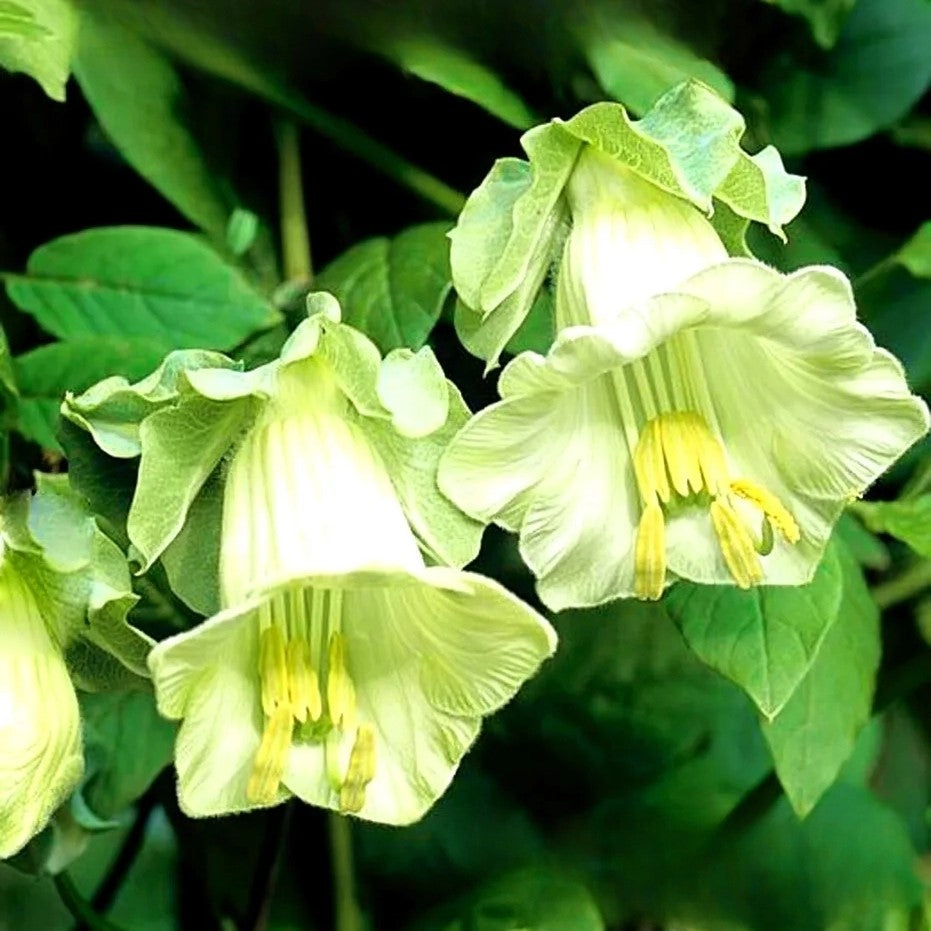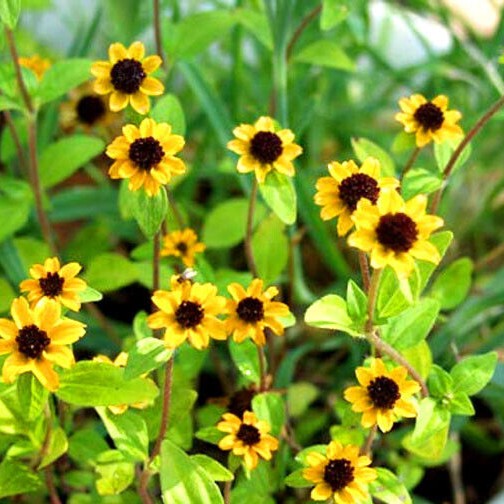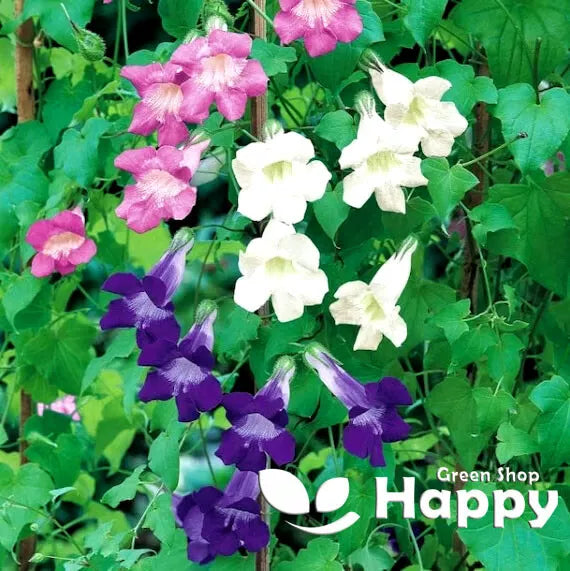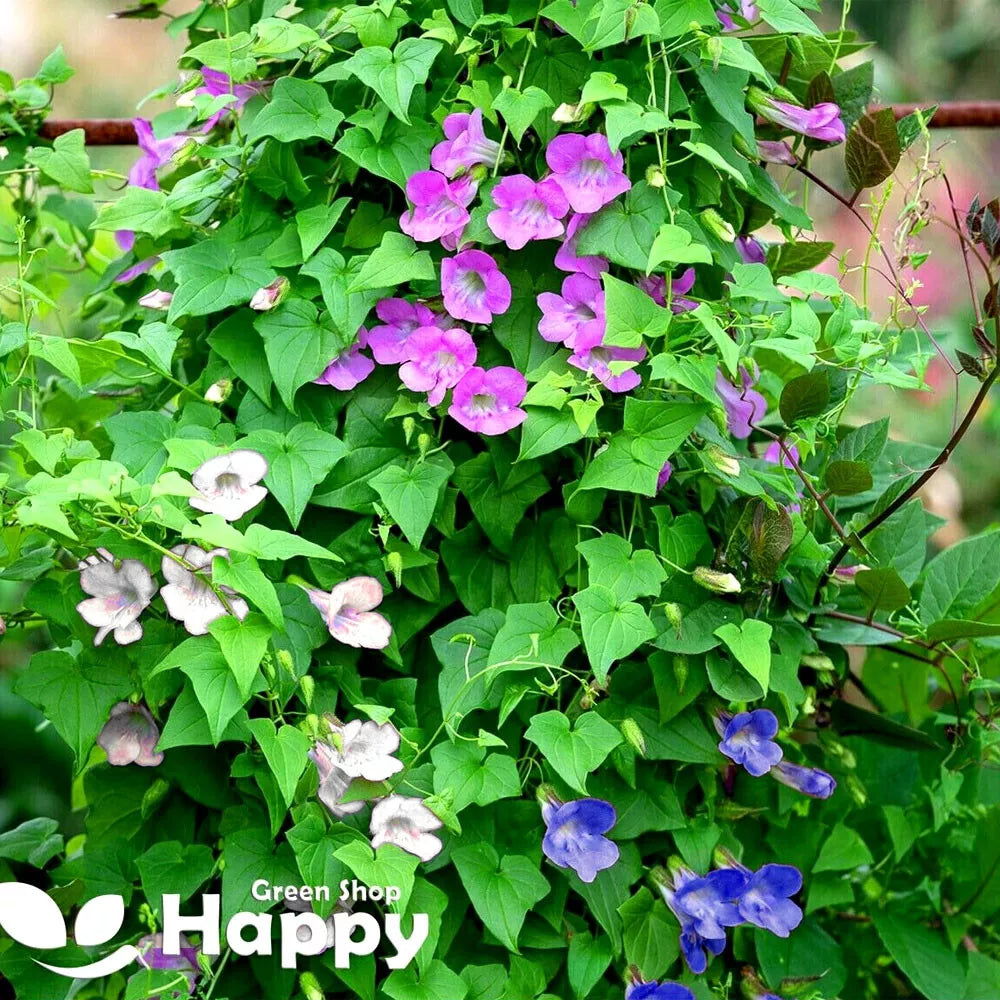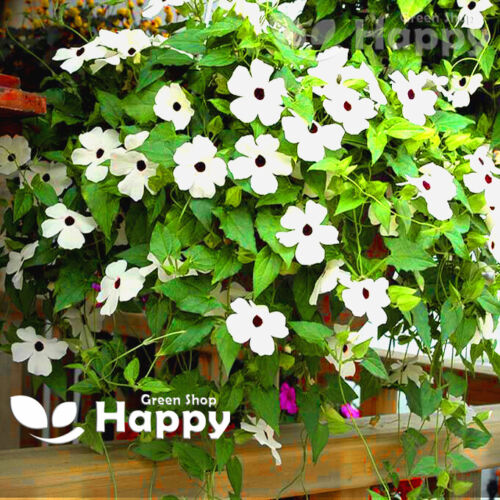Sort by:
40 products
40 products
Kenilworth Ivy – Seeds (Cymbalaria muralis)
Kenilworth Ivy (Cymbalaria muralis) is a charming trailing perennial, perfect for walls, rockeries, and crevices. Its delicate ivy-like foliage is adorned with small violet-lavender flowers that bloom freely throughout the summer. Hardy, low-maintenance, and self-seeding, it creates a natural, cascading effect in the garden.
Why Grow "Kenilworth Ivy"
-
Cascading perennial with trailing habit
-
Violet-lavender flowers all summer
-
Perfect for walls, cracks, and rockeries
-
Hardy, self-seeding and easy to grow
Key Features
-
Type: Perennial (Cymbalaria muralis)
-
Height: 5–10 cm, trailing habit
-
Flowering: May–September
-
Position: Sun or partial shade
-
Uses: Rockeries, walls, ground cover, containers
Ideal For
-
Stone walls and paving crevices
-
Rock gardens and shady spots
-
Naturalistic ground cover
-
Containers and hanging baskets
Sowing & Growing
-
Sow indoors: February–April in trays
-
Sow outdoors: April–June in final position
-
Germination: 14–28 days at 15–20°C
-
Thin to 10–15 cm apart
-
Prefers moist but well-drained soil
Dwarf Nasturtium 'Peach Melba' – Seeds
(Tropaeolum nanum)
Dwarf Nasturtium 'Peach Melba' is a compact, low-growing annual that produces vibrant peach-colored blooms with subtle apricot tones. Its trailing habit makes it perfect for borders, containers, and hanging baskets. Easy to grow and fast-flowering, this variety also attracts pollinators like bees and butterflies, adding colour and life to your garden.
Key Features
-
Type: Half-hardy annual
-
Height: 15–25 cm
-
Spread: 25–35 cm
-
Flowering: June–September
-
Position: Full sun
-
Soil: Well-drained, moderately fertile
Ideal For
-
Containers and hanging baskets
-
Borders and edging
-
Pollinator-friendly gardens
-
Cottage-style planting
Sowing & Growing
-
Sow indoors: March–April at 18–22°C
-
Sow outdoors: May, after frost risk has passed
-
Germination: 7–14 days
-
Thin or transplant to 20–25 cm spacing
-
Deadhead to encourage continuous flowering
Dwarf Evening Primrose Yellow Seeds (Oenothera missouriensis)
Dwarf Evening Primrose Yellow is a low-growing perennial that glows with large, lemon-yellow blooms from summer into early autumn. The flowers open in the evening, releasing a delicate fragrance that attracts moths and night pollinators. Its trailing habit makes it perfect for rock gardens, borders, and containers.
What Makes It Special
-
Large, golden-yellow blooms that open in the evening
-
Fragrant and pollinator-friendly
-
Spreading, low-growing habit for groundcover
Key Features
-
Botanical name: Oenothera missouriensis
-
Hardy perennial
-
Height: 15–30 cm
-
Bloom time: Summer to early autumn
Ideal For
-
Rock gardens and borders
-
Groundcover and containers
-
Evening and wildlife gardens
Sowing
-
Sow indoors Feb–Apr or outdoors Apr–Jun
-
Press seeds lightly into soil, do not cover deeply
-
Germination: 14–21 days at 18–22°C
-
Space 20–30 cm apart
-
Flowers from the second year onward
Cupflower 'White Robe' – Seeds (Nierembergia hippomanica)
Cupflower 'White Robe' is a charming, compact perennial (often grown as an annual) that produces a carpet of pure white, cup-shaped blooms with golden centers. Its trailing habit makes it a superb choice for containers, baskets, and sunny borders. With its long flowering season and easy-care nature, this variety adds brightness and elegance to any summer display.
Highlights
-
Abundant white cup-shaped flowers with yellow eyes
-
Blooms continuously from summer to frost
-
Compact, trailing growth – perfect for baskets and pots
-
Tolerant of dry conditions once established
-
Easy to grow and maintain
Key Features
-
Botanical Name: Nierembergia hippomanica
-
Variety: 'White Robe'
-
Seed Count: Approx. seeds per pack
-
Height/Spread: 15–25 cm tall, 30 cm spread
-
Position: Full sun, well-drained soil
-
Flowering Period: Summer through autumn
Perfect For
-
Hanging baskets and containers
-
Garden edging or ground cover
-
Adding crisp white contrast in mixed displays
-
Rockeries and sunny beds
Sowing Instructions
-
Sow indoors Feb–April at 18–21°C
-
Surface sow on moist compost, press lightly, do not cover
-
Germination: 14–21 days
-
Transplant seedlings when large enough, spacing 20–25 cm apart
-
Harden off before planting outdoors after last frost
Cupflower 'Purple Robe' – Seeds (Nierembergia hippomanica)
Cupflower 'Purple Robe' is a striking, compact perennial (often grown as an annual in cooler climates) that produces masses of velvety purple, cup-shaped blooms with golden centers. Its trailing habit makes it an excellent choice for containers, hanging baskets, and garden edging. Long-blooming and low-maintenance, this variety brings vibrant color to summer plantings.
Highlights
-
Deep purple cup-shaped flowers with golden eyes
-
Long flowering period from summer to frost
-
Compact, trailing habit – ideal for baskets and pots
-
Drought tolerant once established
-
Easy-care and great for sunny positions
Key Features
-
Botanical Name: Nierembergia hippomanica
-
Variety: 'Purple Robe'
-
Seed Count: Approx. seeds per pack
-
Height/Spread: 15–25 cm tall, 30 cm spread
-
Position: Full sun, well-drained soil
-
Flowering Period: Summer through autumn
Perfect For
-
Hanging baskets and patio containers
-
Ground cover or edging in sunny beds
-
Adding vibrant color to summer displays
-
Rock gardens and borders
Sowing Instructions
-
Sow indoors Feb–April at 18–21°C
-
Surface sow on moist compost, lightly press seeds in, do not cover
-
Germination: 14–21 days
-
Transplant seedlings when large enough to handle, spacing 20–25 cm apart
-
Acclimatize before planting out after last frost
Cup and Saucer White – 15 Seeds (Cobaea scandens)
The Cup and Saucer Vine (White) is a fast-growing climber with elegant, bell-shaped blooms resembling little teacups. Its trailing vines quickly cover fences, arches, and trellises, creating a stunning vertical display. A perfect choice for adding a touch of elegance and charm to summer gardens.
What Makes It Special
-
Unique cup-and-saucer shaped blooms
-
Rapid-growing climbing vine
-
Long-lasting flowers from summer to frost
-
Adds instant charm to vertical garden spaces
Key Features
-
Half-hardy perennial, often grown as an annual
-
Height: up to 3–6 m
-
Large white, bell-shaped flowers
-
Prefers full sun to partial shade
-
Attracts bees and pollinators
Ideal For
-
Fences, walls, arches, pergolas, and trellises
-
Cottage gardens and romantic garden themes
-
Vertical displays and privacy screens
-
Cut flowers for unique arrangements
Sowing
-
Sow indoors 8–10 weeks before the last frost
-
Pre-soak seeds for 12–24 hours before sowing
-
Place seeds on their side, just under the surface of soil
-
Germination: 20–30 days at 18–20°C
-
Harden off and transplant outdoors after frost, spacing 30–45 cm apart
Creeping Zinnia Seeds (Sanvitalia procumbens)
Creeping Zinnia is a charming, low-growing, trailing annual with masses of small, golden-yellow daisy-like blooms with dark centers. Perfect for ground cover, hanging baskets, containers, or edging garden beds, this hardy little flower provides a cheerful carpet of color all summer long.
What Makes It Special
-
Trailing, creeping habit – great for hanging baskets and ground cover
-
Produces hundreds of miniature sunflower-like blooms
-
Heat- and drought-tolerant once established
-
Long-lasting summer color with minimal care
Key Features
-
Botanical name: Sanvitalia procumbens
-
Common name: Creeping Zinnia
-
Seed count: Approx. seeds per pack
-
Height/Spread: 15–25 cm tall, spreading up to 30–40 cm
-
Position: Full sun; well-drained soil
-
Flowering period: June–October
Ideal For
-
Hanging baskets and containers
-
Rock gardens and edging borders
-
Ground cover in sunny beds
-
Adding bright, low-maintenance summer color
Sowing Instructions
-
When to sow: March–May indoors; May–June outdoors
-
How to sow:
-
Sow thinly on the surface of moist compost and cover lightly with fine soil or vermiculite
-
Keep at 18–22°C; germination takes 7–14 days
-
-
Transplanting: Prick out seedlings when large enough; plant outside after frost
-
Care: Prefers sunny, well-drained sites; water regularly until established; thrives in poor soils.
Climbing Snapdragon Mix – Cascading Color for Trellises and Baskets
Climbing Snapdragon Mix produces a cascade of trumpet-shaped blooms in soft pinks, purples, whites, and blues. These charming, twining plants are perfect for adding vertical interest to trellises, fences, arches, or for trailing from hanging baskets. Long-flowering from summer until frost, they bring a cottage-garden feel to any space.
What Makes It Special
-
A colorful mix of delicate, snapdragon-like flowers
-
Versatile – climbs or trails beautifully
-
Long flowering season into autumn
-
Adds charm to small or large garden spaces
-
Perfect for both vertical and cascading displays
Key Features
-
Height: 150–250 cm when supported
-
Fast-growing annual climber
-
Soft pastel and rich jewel tones in one mix
-
Attracts pollinators like bees and butterflies
-
Easy to grow in containers or beds
Ideal For
-
Trellises, arches, and obelisks
-
Hanging baskets and window boxes
-
Covering fences or screening unsightly areas
-
Adding height to cottage garden displays
Sowing
-
Sow indoors 8–10 weeks before last frost
-
Plant seeds on the surface of moist compost and lightly cover
-
Germination: 15–30 days at 18–21°C
-
Transplant after frost, spacing 30–45 cm apart
-
Prefers full sun to partial shade and sheltered spots
Black-Eyed Susan White Seeds (Thunbergia alata)
Black-Eyed Susan White is a vigorous, climbing annual producing striking white flowers with contrasting dark centers. Its trailing and twining habit makes it perfect for trellises, fences, arbors, and containers. Loved for its long flowering season and fast growth, it adds vertical interest and bright, cheerful color to any garden.
What Makes It Special
-
Bright white flowers with contrasting dark centers
-
Vigorous climbing and trailing growth ideal for vertical displays
-
Long-flowering, providing summer and autumn color
-
Attracts pollinators such as bees and butterflies
Key Features
-
Botanical name: Thunbergia alata
-
Variety: White
-
Seed count: Approx. seeds per pack
-
Height/Spread: Climbs 1.5–2.5 m; spread depends on support
-
Position: Full sun to partial shade; fertile, well-drained soil
-
Flowering period: June–October
Ideal For
-
Trellises, fences, arches, and arbors
-
Hanging baskets and containers with support
-
Vertical interest in garden beds and borders
-
Pollinator-friendly gardens
Sowing Instructions
-
When to sow: February–April indoors; March–May outdoors
-
How to sow:
-
Sow seeds 0.5–1 cm deep in pots or seed trays
-
Germination in 10–14 days at 20–25°C
-
-
Transplanting: Plant outdoors after frost, spacing 25–30 cm apart with support
-
Care: Water regularly; provide trellis or support for climbing; deadhead to prolong flowering
Showing 36/40





